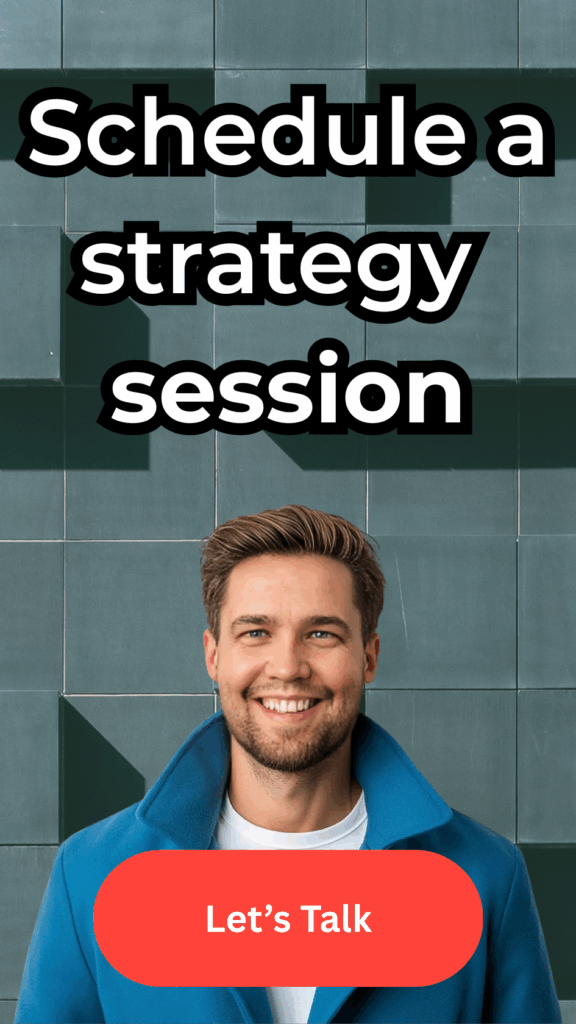A landing page is where interest turns into intent. In B2B, it’s often the difference between a bounce and a booked demo. Whether the goal is capturing leads, scheduling consultations, or driving downloads, a well-built landing page sits at the core of every campaign.
AI has made this process faster and smarter. Marketers can now use AI prompts to generate headlines, CTAs, and value propositions in seconds — and test which combinations convert best. Instead of guessing what works, you can guide AI with intent-driven prompts and real data to produce copy that resonates with your target audience and aligns with your sales funnel.

1. Defining Your Landing Page Goals
Before writing a single line, define what you want the page to achieve. Every landing page should serve one clear purpose. Mixing multiple goals — like lead capture, demo requests, and event signups — dilutes your message and kills conversion rates.
Common B2B landing page goals include:
- Capturing marketing-qualified leads (MQLs)
- Generating demo or consultation requests
- Driving webinar or whitepaper registrations
- Promoting trial signups
Marketo’s Marketing 2025 research found that B2B teams with explicit conversion KPIs tied to customer lifetime value see stronger ROI and pipeline contribution. Clarity creates alignment across teams and sharper messaging at every stage.
Actionable Step — Create a Landing Page Goal Checklist:
- What single action do you want visitors to take?
- Who is the primary decision-maker this page targets?
- Which funnel stage (awareness, consideration, decision) does it serve?
- What social proof or data backs your claims?
- How will you measure success — CTR, form submissions, or demo bookings?
B2B inbound experts at Geeky Tech emphasize that awareness, consideration, and decision-stage content each require distinct messaging. Matching your landing page tone to buyer intent ensures visitors feel understood instead of sold to.
2. Crafting Effective Prompts for Landing Page Content
Every element of a landing page should move a visitor toward a decision. AI can speed up ideation, but it only works as well as your prompts.
Essential landing page components:
- Headline: The promise. Grab attention fast.
- Subheadline: Reinforces the value and audience fit.
- Benefits: Show real-world outcomes, not features.
- Social proof: Case studies, testimonials, or logos.
- CTA: Direct and specific.
Prompt examples for each section:
For headlines:
“Write 5 B2B landing page headlines for a SaaS platform that helps RevOps teams improve pipeline velocity. Keep them under 12 words and focus on outcomes.”
For subheadlines:
“Write a short, supportive subheadline that explains how the platform helps teams close deals 30% faster.”
For testimonials:
“Summarize a testimonial from a marketing director highlighting ROI improvements after using our software.”
For CTAs:
“Generate five CTA variations that encourage visitors to book a 15-minute product demo.”
Actionable Step — Structure a Prompt for Compelling Copy:
Use this framework:
“Create a [content type] for [target audience] promoting [solution/benefit] in a [tone/style] that emphasizes [specific value or emotion]. Include [stat, CTA, or differentiator].”
Example:
“Create a landing page headline for enterprise IT leaders promoting our threat detection platform, emphasizing reduced downtime and compliance assurance.”
3. Leveraging AI for A/B Testing Variations
Testing separates assumptions from results. AI simplifies A/B testing by generating multiple variations in seconds — allowing marketers to see what truly drives engagement.
The State of GTM AI 2025 report found that B2B marketing teams using AI for message testing were 3–5× more likely to improve pipeline and conversion rates. Instead of manually writing and testing every variation, AI can create a structured batch of copy and design ideas to analyze.
How AI supports testing:
- Produces multiple versions of headlines, subheads, and CTAs instantly.
- Predicts which tone or phrasing will likely perform better based on engagement history.
- Integrates with analytics tools like HubSpot, Unbounce, or Google Optimize to test variations live.
Actionable Step — Example Testing Prompt:
“Generate 10 CTA options for a B2B SaaS demo page. Use a mix of direct, conversational, and authority-driven tones.”
Sample outputs:
- Book Your Custom Demo Today
- See How Fast You Can Scale
- Get a Data-Backed Demo in Minutes
- Request a Walkthrough from a GTM Engineer
- Start Boosting Your Pipeline Efficiency
Run each variation against a segment of traffic, track click-through rates, and double down on the version that drives form submissions.

4. Integrating Data and Analytics into Your Prompts
AI content is only as good as the feedback you feed it. Data from your analytics tools can inform better prompts and sharper optimization.
If analytics show high bounce rates on mobile, prompt the AI to simplify copy. If a specific benefit drives higher engagement, center future prompts around that value.
Use data to guide prompts like:
“Rewrite this headline using language that emphasizes measurable ROI and fast implementation — our analytics show that value-driven copy outperforms feature-led copy by 40%.”
Metrics to monitor:
- Conversion rate by headline version
- Scroll depth and CTA click rate
- Average form completion time
- Engagement by audience segment
Encourage continuous learning loops:
- Gather insights weekly.
- Rewrite prompts using performance data.
- Regenerate content and relaunch tests.
Marketers who integrate analytics into their AI workflows move from random output to precision-driven content — exactly what Marketing 2025 predicted as the shift from quantity to quality across marketing teams.
High-converting landing pages don’t just happen. They’re the result of clear goals, strong messaging, continuous testing, and data-led refinement.
AI helps marketers create, test, and iterate faster — but success still comes from clarity and intent. Define what you want, feed AI with context-rich prompts, and use performance data to evolve each version.
In 2025’s B2B landscape, where content saturation is high and attention spans short, the combination of smart AI prompts and structured analytics will set apart teams that build traffic from those that build pipeline.






